Accelerator Project Upgrade for the LHC (APUL)
The dipoles required in the Insertion Regions (IRs) of the LHC, where the beams are brought to the collision points, have field and aperture requirements close to those of the RHIC arc dipole magnets. Thus the superconducting coils developed for those magnets can be used in a cost-effective dipole design that satisfies CERN's requirements. The Accelerator Project for an Upgrade of the LHC (APUL) built two spare IR dipoles to increase the reliability of the spare magnets presently at CERN. APUL received CD 0 approval (Mission Need) on November 19, 2008 and CD 1 approval (Alternative Selection and Cost Range) on September 30, 2010. CD 2/3 approval ("start of construction") was received on July 29, 2011. CD 4 (completion) was approved March 27, 2014. The Total Project Cost is $11,440,000. APUL was completed on schedule and under budget, with a larger scope (two magnets instead of one) than initially approved. APUL received the DOE Secretary's Honor Award for the Project on April 7, 2015.
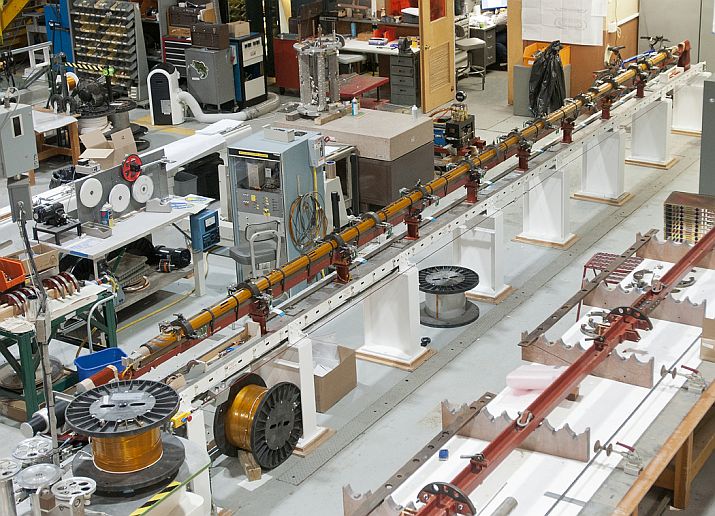
Semiautomatic coil winding with 10 m coil. The spool of cable used in the coil winding is in the foreground.
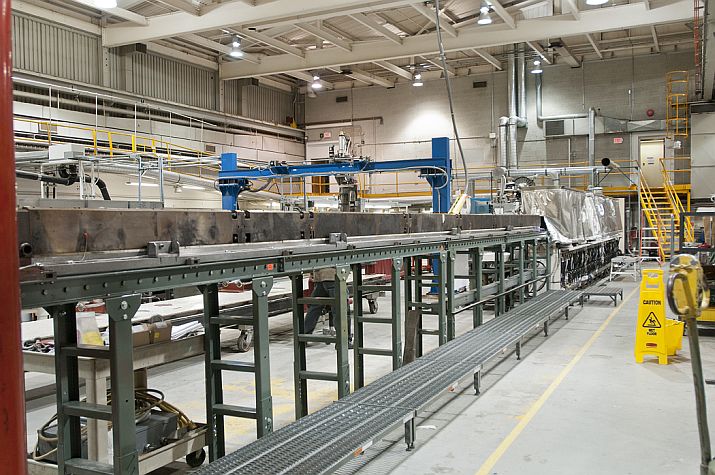
The massive steel 10 m form block used to set the precise size of the coil.
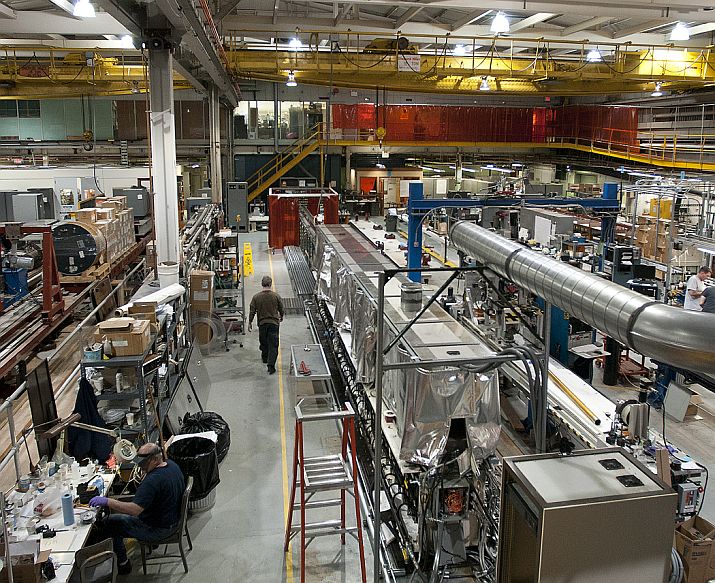
The coil, inserted in the form block, is heated electrically to set the epoxy that fixes the coil size. Heating is done inside an array of heavy curtains (foreground) that minimizes heat loss.
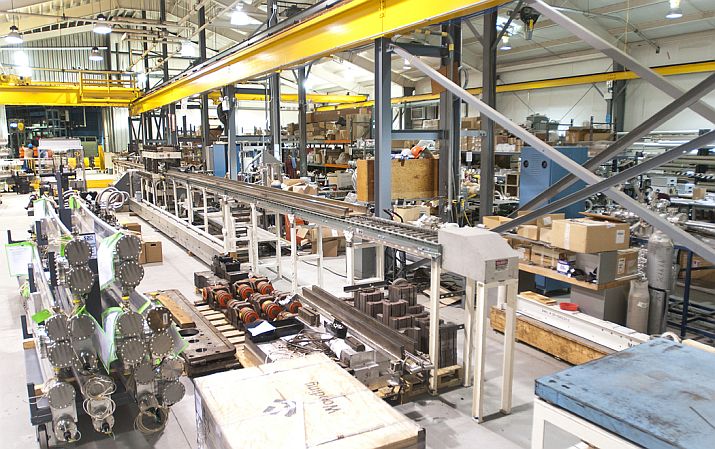
The 2 m collaring press is placed between two 10 m-long sets of rollers (right side of photo), so that collaring (application of load to prevent coil motion during excitation) can be done in 2 m steps.
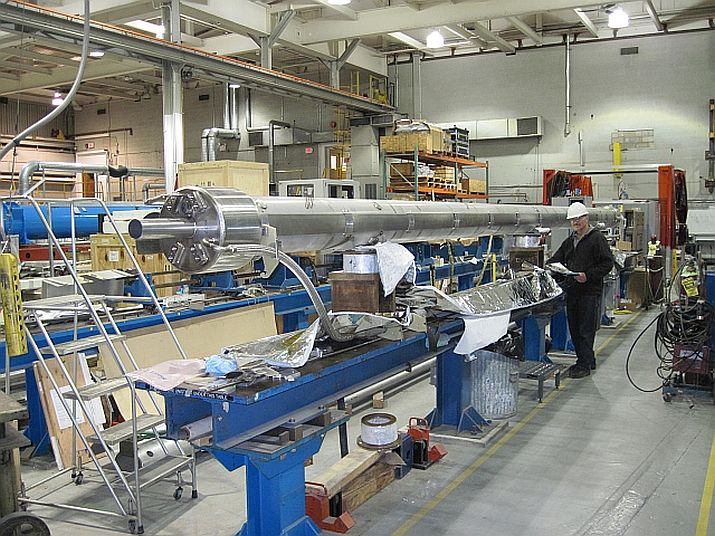
The 10 m "cold mass," which contains the superconducting coil assembly and operates a few degrees above absolute zero.
Peter Wanderer, of Brookhaven's Superconducting Magnet Division, discussing magnets being built to increase the reliability of spare IR dipole magnets used in the LHC at CERN.


